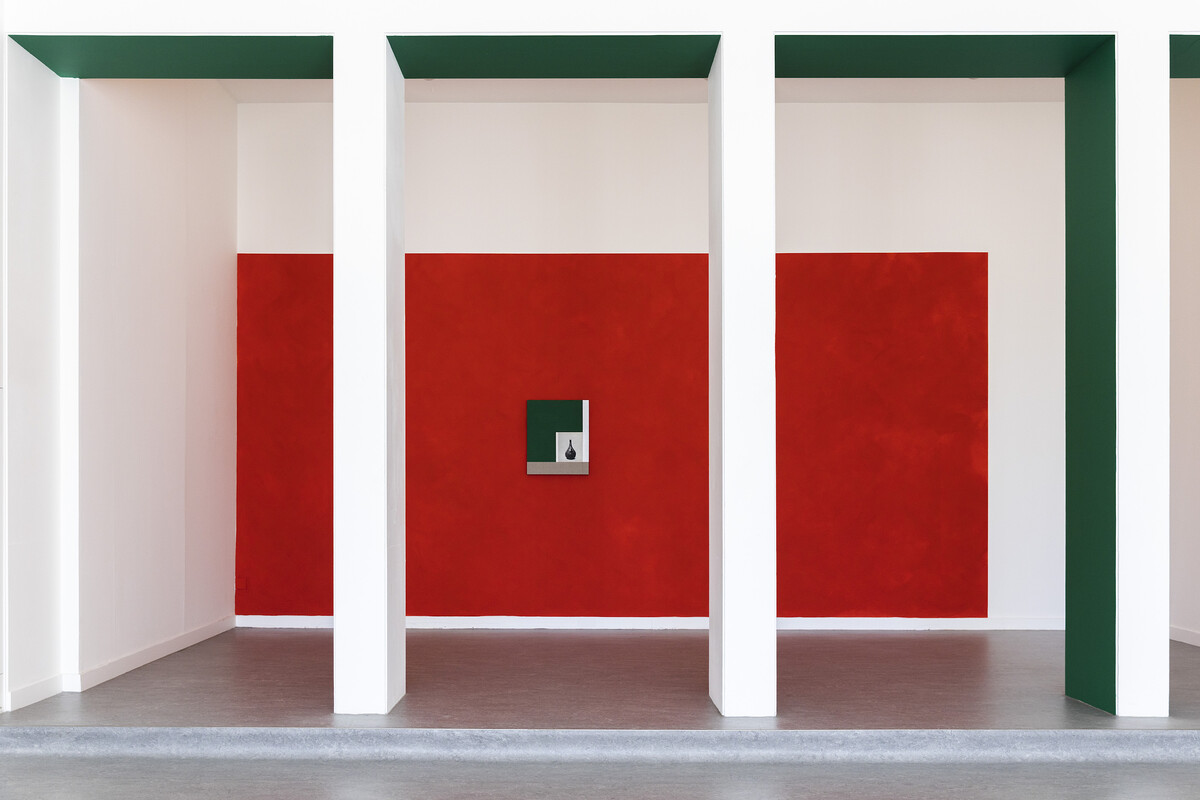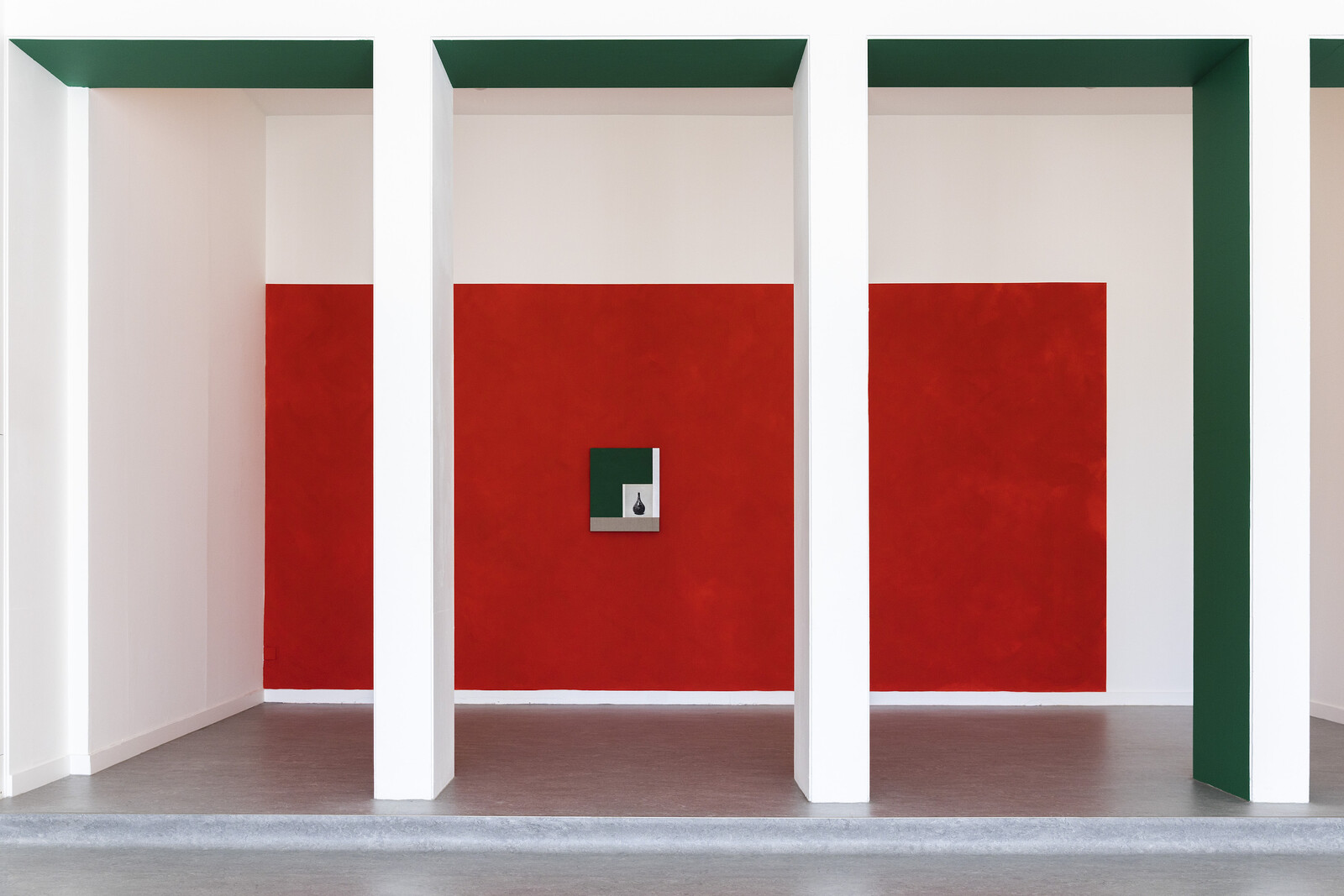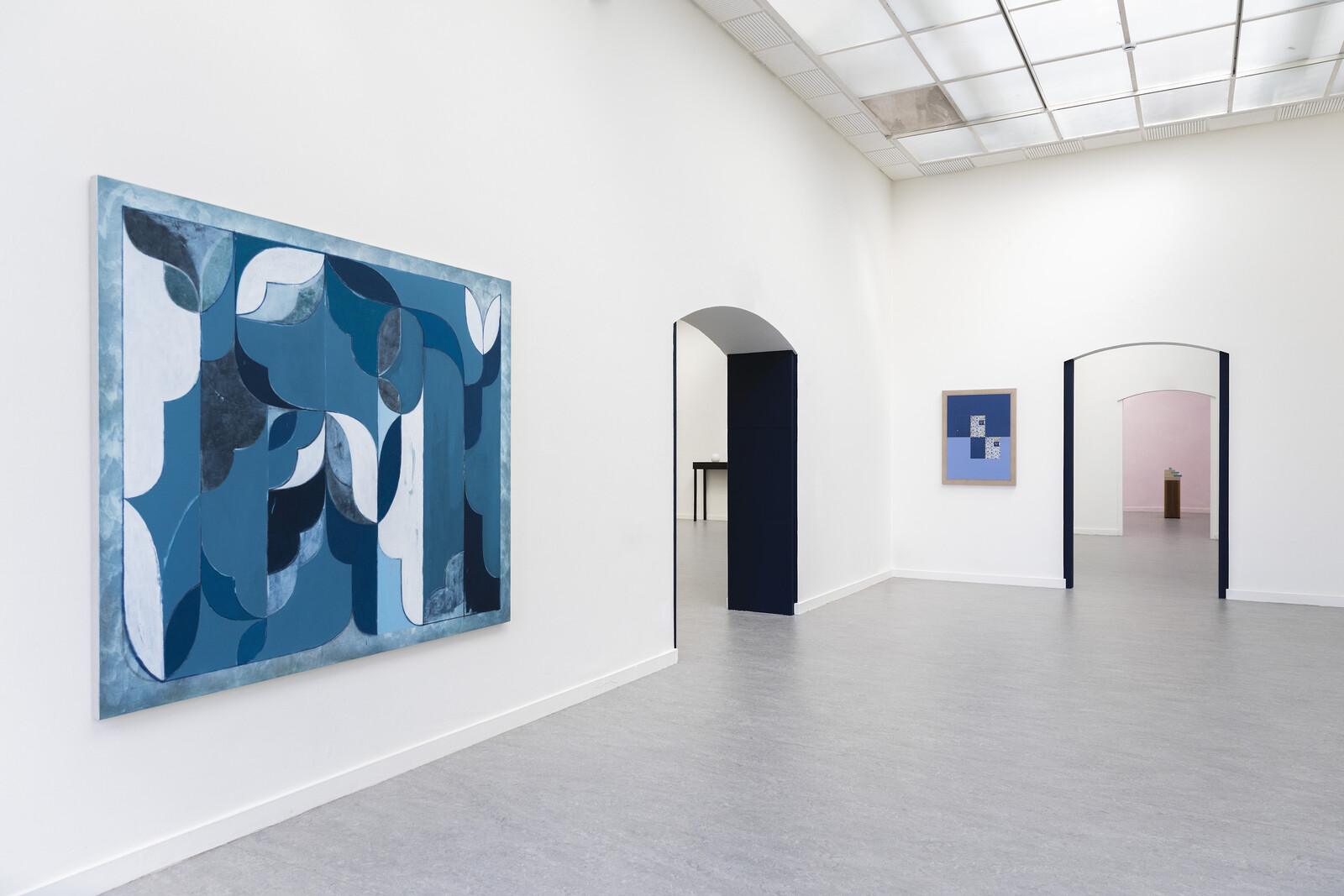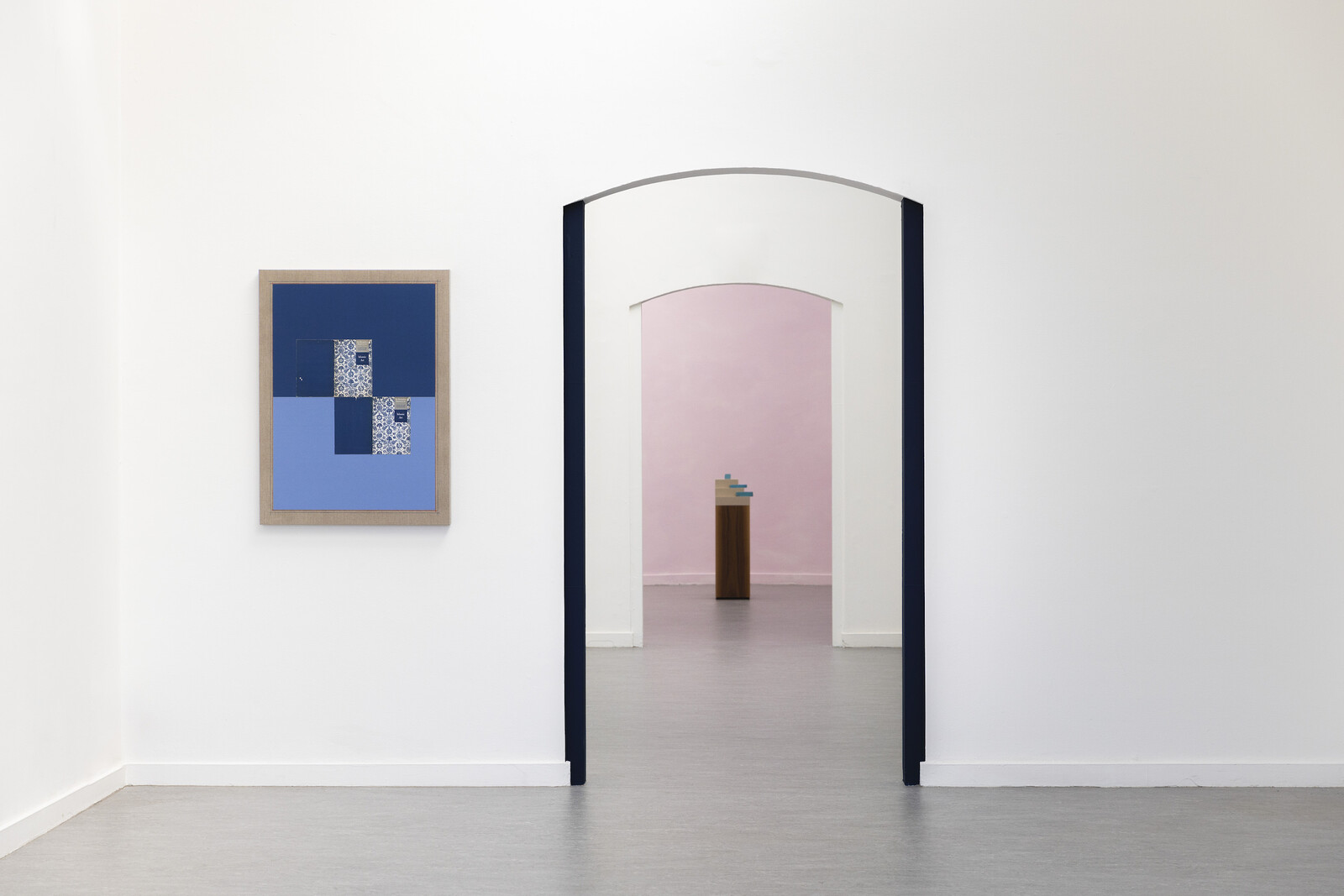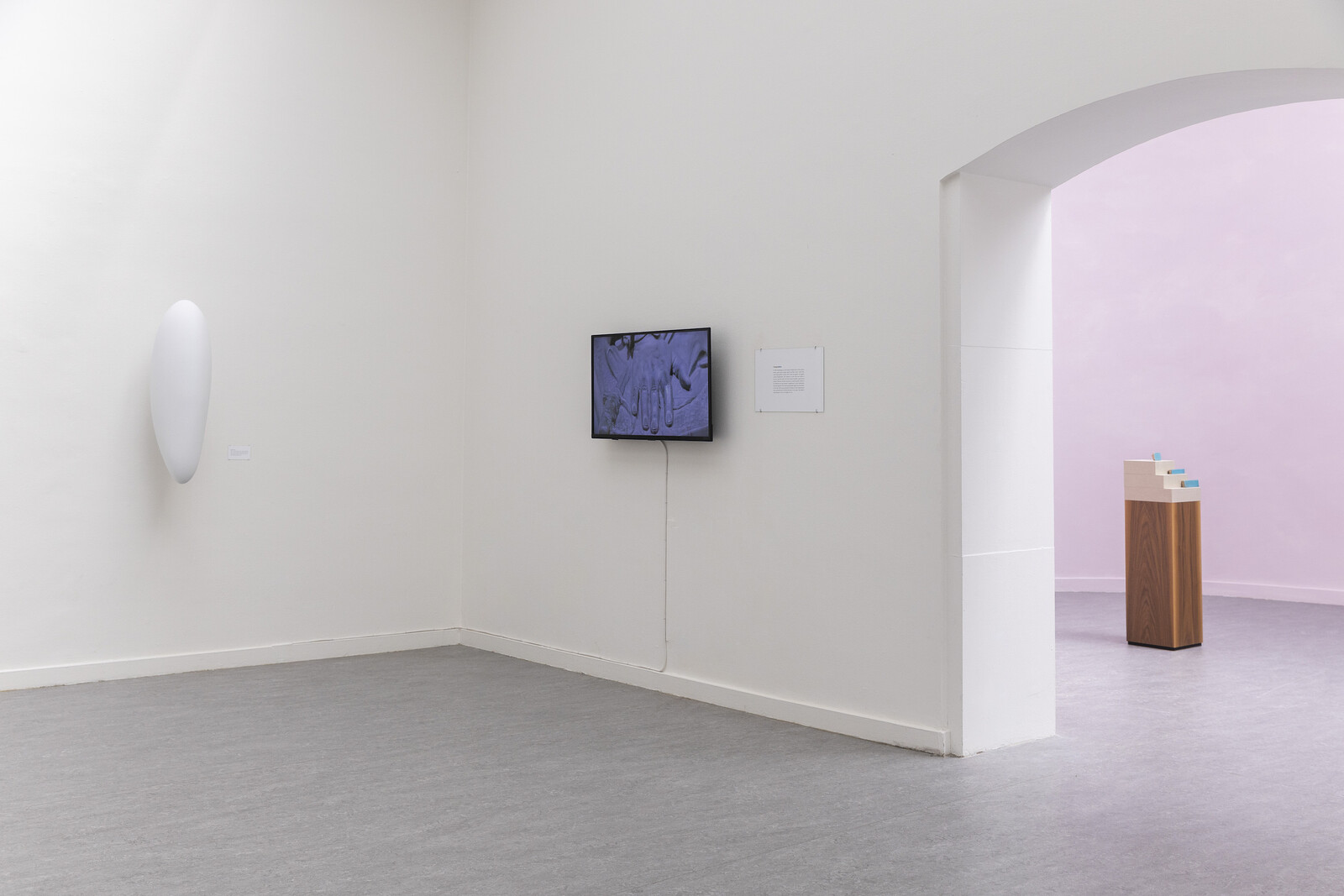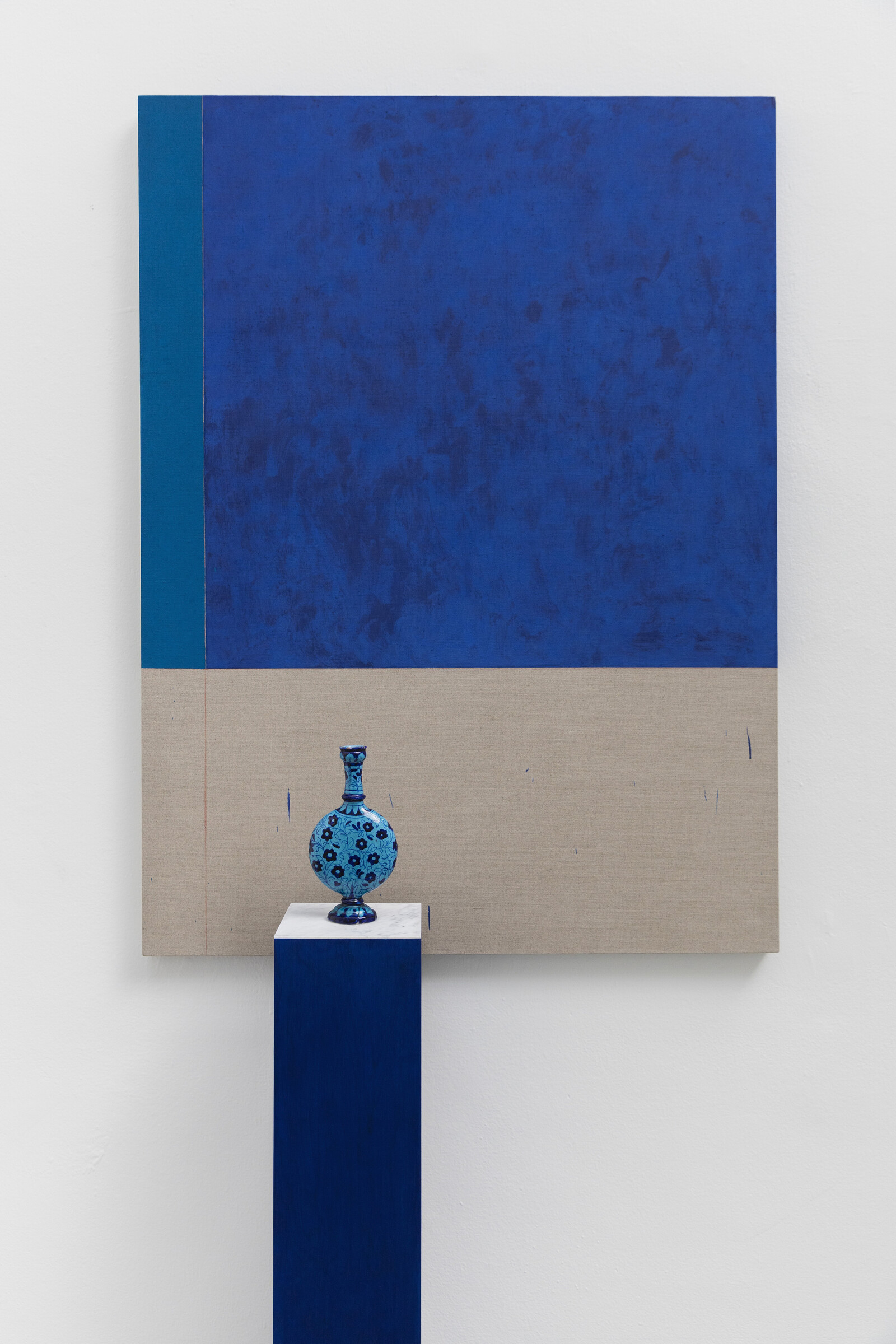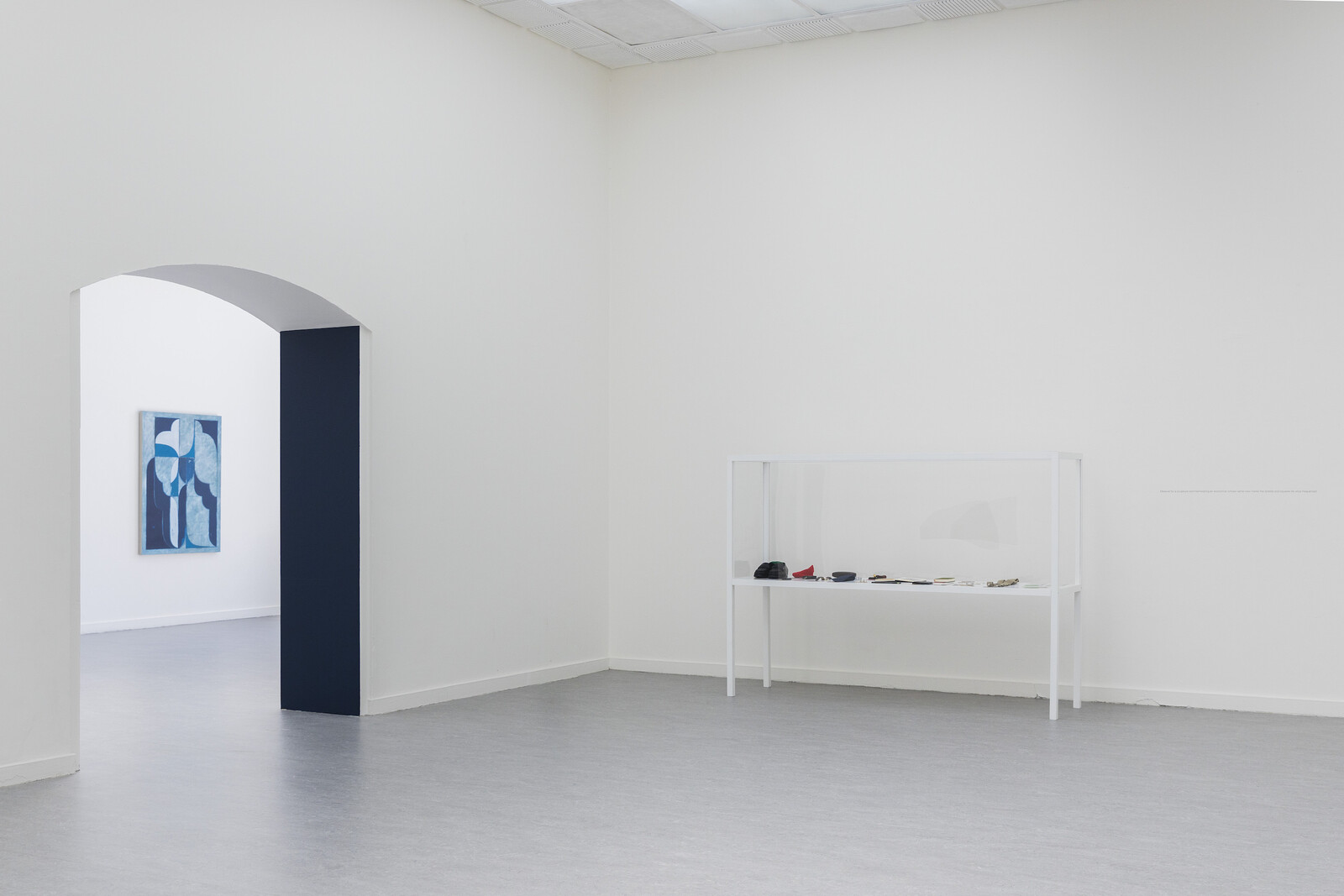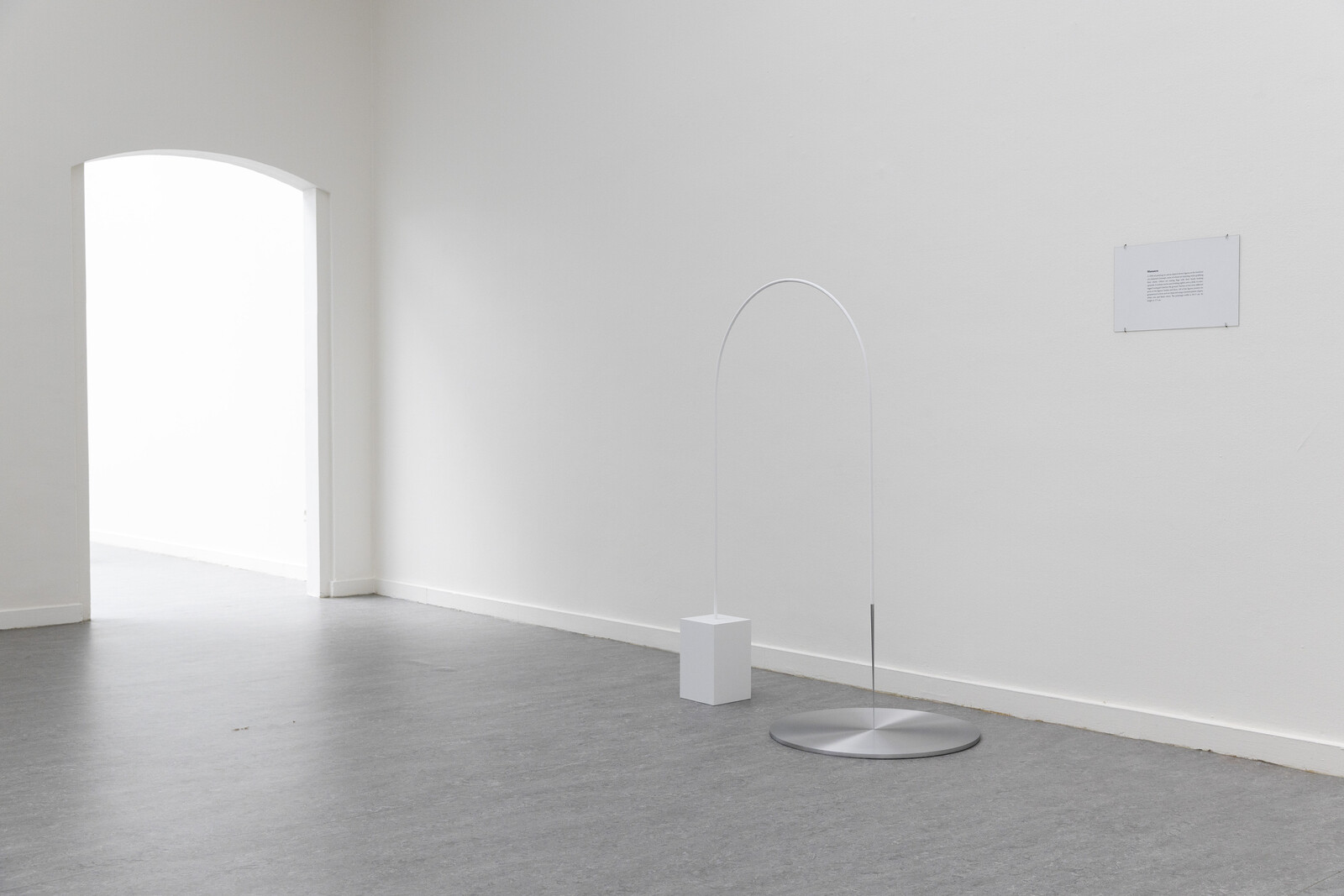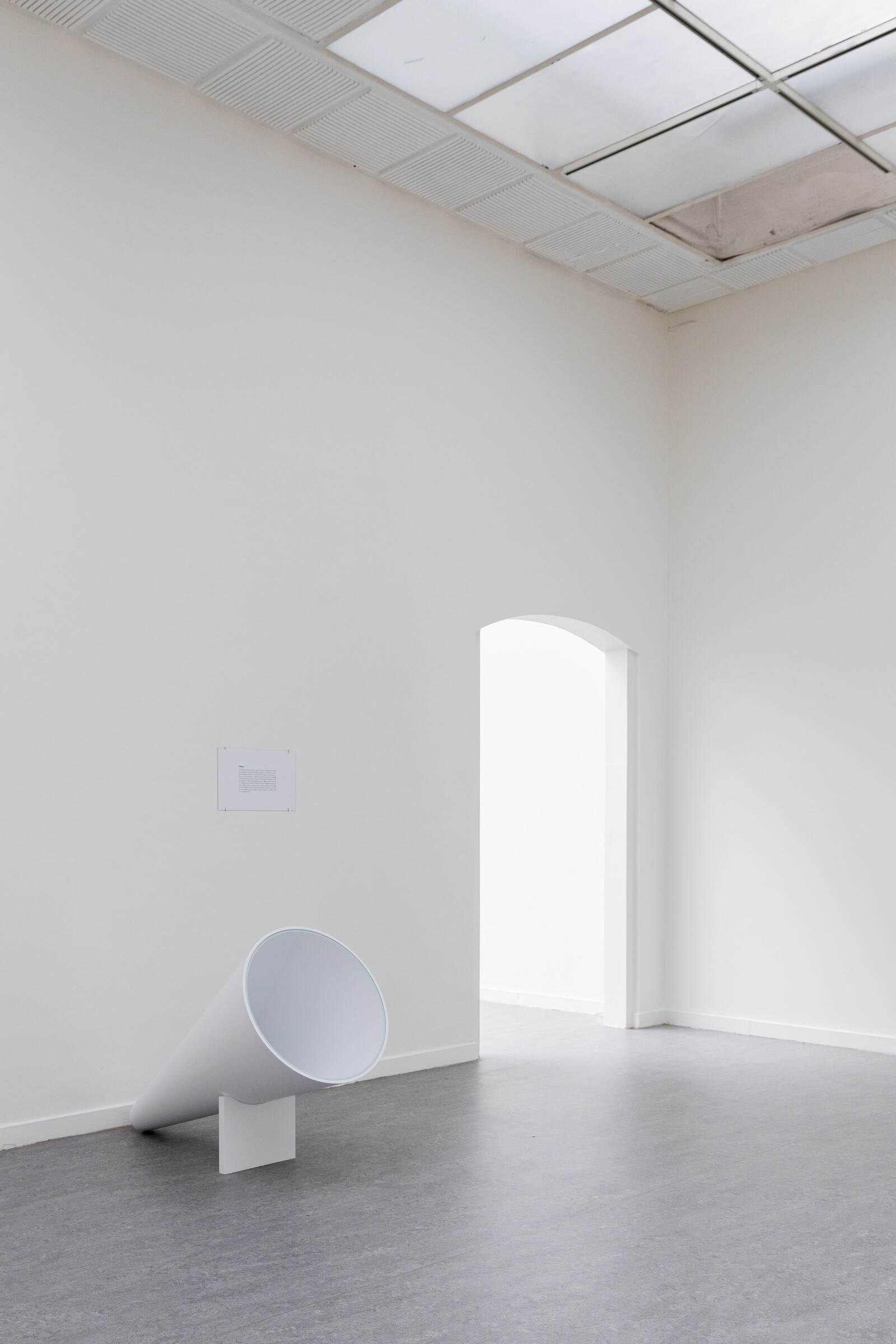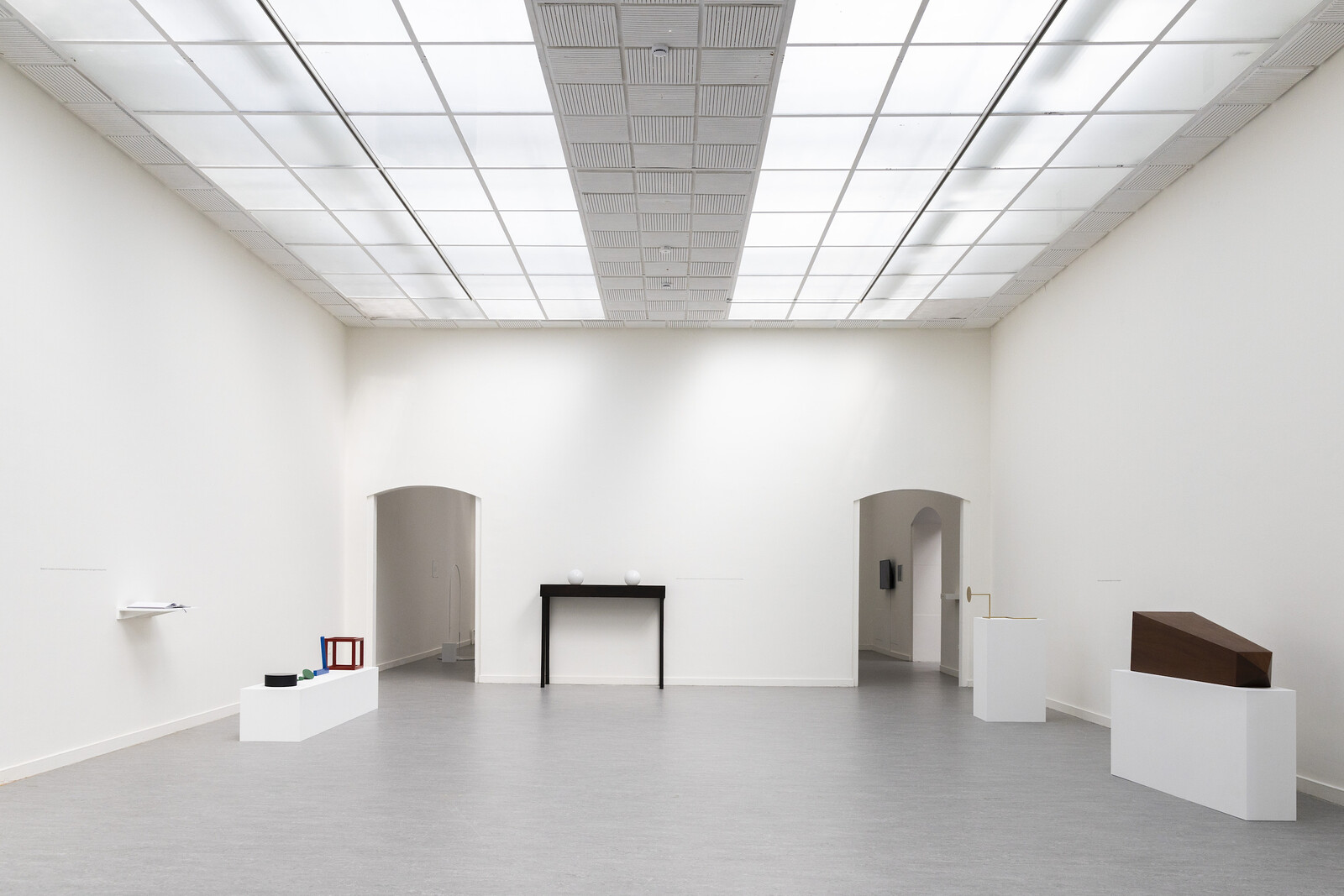The title of Kamrooz Aram and Iman Issa’s “Lives of Forms,” and the work included in it, is not inspired by French art historian Henri Focillon’s 1934 study Vie des formes, as far as I know. Yet after exploring this kempt trove of paintings, sculptures, and displays, installed in separate galleries devoted to each artist, the art-history geek in me found hope in Focillon’s claim that formal relationships within and among artworks order and serve as a metaphor for the universe. In this universally chaotic period, with this astute artist pairing, curators Silvia Franceschini and Tim Roerig kindle still-combustible frictions between aesthetics and politics by exquisitely accentuating form in relation to the content it conveys.
“Lives of Forms” asserts that aesthetic form is always imbricated in the socio-political realities of historical moments. The space in which the artists’ works overlap is at a threshold atop the central staircase, just outside the gallery entrance. There sits a white, ring-shaped bench where you can listen to a disembodied text-to-speech software-generated voice deliver Issa’s looping sound piece The Revolutionary (2010). While doing so, you can gaze toward or away from an interior portico in which Aram’s trim collage of a ceramic vessel on raw and painted canvas, Andata (Luster on Blue Glaze) (2021), hangs on an expanse of crimson-painted wall delimited by white pilasters, the inside edges of which he has crisply decorated with a shade of mossy green that corresponds with the painted collage. Aram and Issa underscore the temporal and spatial dynamics of form: this specific arrangement of works produces a sensory convergence that divides the attention and highlights aspects of architect Francesca Torzo’s museum renovation.
Once inside, the formal relationships between the artists’ works shift from direct encounter to a telepathically subtle exchange of poised sensibilities. From the white rooms occupied by Issa you can glimpse Aram’s polychromatic painting, sculpture, and collage, just as you can catch the glint of Issa’s glass, metal, and polished wood surfaces from Aram’s rooms. The artists compose elements and configure the space in and around their work to operate as images, and it’s striking how the exhibition design of “Lives of Forms” lavishly generates more. Issa’s displays are set at a short distance from each wall, so as not be circled around. Aram frames some of his work with painted walls, the various colors of which can be seen through painted arched doorways.
That both Issa and Aram are interested in trans-histories of art, questions of heritage, and museological conventions is evident in their use of existing objects, gallery presentation formats and devices, and reproductions. Issa’s Lexicon series (2012–19) comprises studies for non-mimetic remakes of twentieth-century artworks, each paired with an allusive text-panel description of the original. Massacre (Study for 2019) (2019), a chest-high arc of white-painted metal joined on either side by a short white rectangular plinth and a brushed aluminum disk, is described as referring to an unnamed 1958 oil painting in red, gray, white, and black. Hung on a pale gray-blue wall, Aram’s Composition with Glazed Bricks, Susa (2021), contains five small raw linen panels painted in warm soothing colors to resemble Josef Albers’s homages to squares. Affixed to each square is a picture of fragments of bricks glazed in the same background colors with a palmette motif, taken from a 1963 catalogue of Iranian ceramics published by Asia House, New York. In this work, Aram, who cites the knotty influences of Henri Matisse, Ellsworth Kelly, and Cy Twombly, acknowledges the cross-cultural use of geometric form for decorative purposes by connecting ornamental and geometric abstraction from Iran and the United States.
Six works from Issa’s Material series (2010–12) are included in “Lives of Forms.” Material for a sculpture proposed as an alternative to a monument that has become an embarrassment to its people (2010), a walnut table topped with two globe lightbulbs and accompanied by the vinyl text title-description on the wall to the right, resonates with current international actions around racist and colonial monuments and memorials. Echoing Issa, who asserts that monuments are “forms that can be argued with,” Aram takes issue with abstract painting, to equally timely ends.1 In Palimpsest 50 and Palimpsest 51 (both 2019) an illusion of public space, replete with buildings, flowers, and blades of grass, emerges from the layering and erasure of deep blue, black, and white strokes on canvas. Inspired by protest graffiti and its redaction in New York, Istanbul, and Beirut, the Palimpsests evoke a public square smashed flat against a riot-shield. By carefully formalizing historical fragments, legacies, shapes, sounds, people, and events, Aram and Issa update and galvanize taboo formalism to think beyond dominant western readings and biased understandings.
“Iman Issa by Andrew Weiner” in BOMB 140 (2017), 43.
